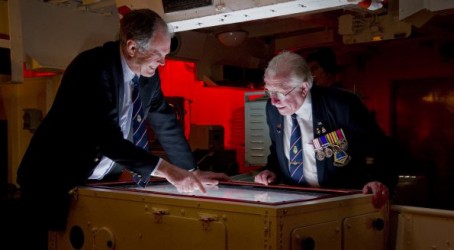Museums
HMS Belfast is the most significant surviving Second World War Royal Navy warship, with a history that stretches back to the Arctic convoys, D-Day, the Cold War and the Korean War.
After 32 years of service, the cruiser was “reduced to disposal” in preparation for sale and destruction by the ship-breakers. Fortunately a devoted band of enthusiasts, aided by the Imperial War Museum, succeeded in bringing the ship to London where she was berthed in the Thames and opened to the public in 1971. The vessel received an IMechE heritage award in 2010.
The ship was forced to close late last year when a section of the gangway collapsed. Now a new gangway has been completed and the museum is open again. Last year also saw the announcement of plans for a quayside pavilion to be built by summer 2012 to improve entrance facilities and aesthetics. Sadly, work on this project has slipped back and the entrance is shabby and underwhelming.
Nonetheless, as HMS Belfast’s eight million visitors would attest, it’s what’s on the inside that counts and the ship’s nine impressive decks do not disappoint. During its time at sea HMS Belfast carried a crew of up to 950. Today visitors can experience what life was like for this floating community by peering into the cramped rooms dedicated to domestic tasks such as cooking and laundry. The mailroom, chapel, bakery, galley and punishment cells are just some of the many chambers offering a ghostly glimpse into the warship’s past. The dental surgery and sick bay are striking for their surgical implements as well as their eerie waxwork patients.
The Arctic messdecks are a powerful reminder of what life was like in freezing conditions. Sailors socialised, slept and ate together in this cramped communal area. The much-enlarged crews during wartime were forced to sling their hammocks in their mess or slept wherever they could, under tables or elsewhere on the ship.
Back on the upper decks, and a few ladder climbs later, can be found the admiral’s bridge. The operations room, the nerve centre of the ship, is also open to visitors, with a simulated radar and touch-screen games. The sights and sounds of an exercise are captured, and visitors are invited to join a mission to salvage parts of a plane downed at sea. Barriers have been removed to encourage a hands-on experience with bits of machinery, knobs, switches and levers.
A few narrow ladders down, the bowels of the ship house the boilers and engines. They are grouped in pairs in four separate but connected compartments so that a single hit from an enemy shell or torpedo could not disable more than 50% of the power plant.
The Gun Turret Experience, in one of the original triple gun turrets overlooking the quarterdeck, invites visitors to follow the story of a young sailor serving on the warship in 1943, during the Battle of the North Cape. Lights, imagery, sound, smoke, movement and smells recreate the intense atmosphere and cramped conditions as the central gun is raised for firing and the floor shakes as it “shoots”.
Those interested in exploring HMS Belfast’s battles in greater depth can stroll through the War and Peace exhibition which recounts the vessel’s history from the 1930s onwards. The ship missed out on what might have proved its finest hour – it had been earmarked to take Winston Churchill to see the D-Day landings but King George VI refused to let his Prime Minister make the dangerous journey.
Finally, the Life at Sea exhibition features oral histories from veterans, including John Harrison who was on board when HMS Belfast was struck by a mine in 1939.

5 things to see
Life at Sea exhibition
See and hear real-life accounts of what it was like to live and work on board the warship.
Gun Turret Experience
Immerse yourself in the Battle of the North Cape.
Life on board
Explore the rooms where sailors worked, slept, ate and socialised.
Operations room
Step into the captain’s shoes and control a fleet of ships off north Borneo.
Engine and boiler rooms
Go deep into the bowels of the ship to find out what powered HMS Belfast.